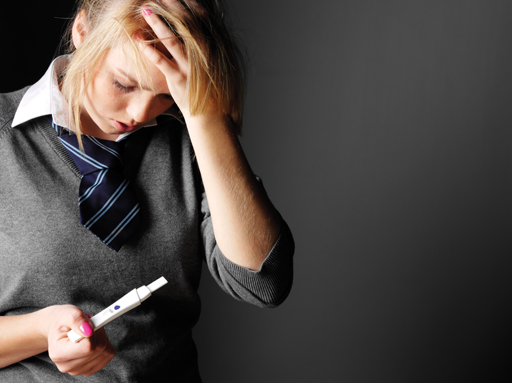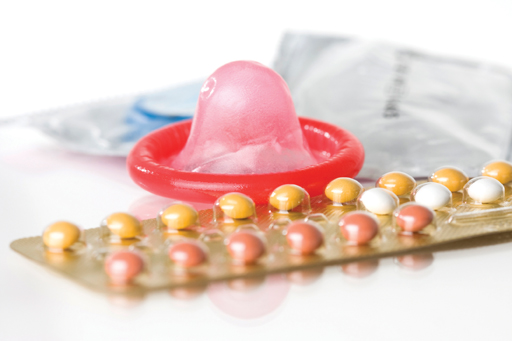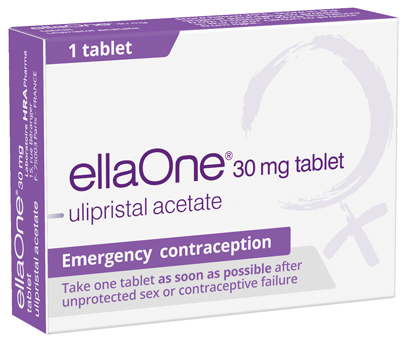Sexual health: Testing times
In Analysis
Follow this topic
Bookmark
Record learning outcomes
Teenage pregnancy rates in England and Wales have almost halved in the last eight years but this decline could be reversed by cuts to contraceptive services.

Learning objectives
After reading this feature you should be able to:
- Discuss contraceptive options with young people
- Signpost customers to sexual health services in your area
- Provide confidential, non-judgmental advice on sexual health matters.
According to the Office for National Statistics (ONS) in May 2017, teenage pregnancy rates in England and Wales have almost halved in the past eight years and are now at their lowest level since records began. There were 21 pregnancies among every 1,000 girls under 18 years in 2015, just under half the 2007 rate of 41.6 per 1,000.
Figures released by ISD Scotland in July 2017 revealed that there has also been a drop in teenage pregnancy rates in Scotland, although there are high regional variations. Despite such progress, the UK still has one of the highest teenage birth rates in western Europe: three times the rate in Italy and more than four times the rate in Sweden.
Meanwhile, figures released by Public Health England in June 2017 show that, although the number of new cases of sexually transmitted infections (STIs) in England decreased by 4 per cent in 2016, young people under 25 years of age continue to be the group most affected. Compared to those aged 25-59 years, STI diagnosis rates in the under-25s are twice as high in men and seven times higher in women.
Chlamydia was the most commonly diagnosed STI in 2016, followed by gonorrhoea, genital warts and herpes.
Natika H Halil, chief executive of sexual health charity FPA, welcomed the continued drop in teenage pregnancy rates, but warned cuts to contraception services could reverse the trend and also affect rates of STIs. “A decrease of 4 per cent in STI rates might look like a success, but unfortunately this may well be more the result of fewer tests being carried out, rather than fewer STIs being transmitted,” she says. “Over 160,000 fewer chlamydia tests were carried out in 2016 compared to 2015 – a fall of 5 per cent.
“Pharmacies can support young people in their local community by offering an accessible, confidential and non-judgmental service that helps young people make informed decisions and positive choices about their sexual health, as well as providing contraception and emergency contraception.”
Fact file: Genital herpes simplex
Genital herpes simplex virus (HSV) is usually acquired during sexual contact. It is most likely to occur when lesions are present but can occur when someone has the infection but is asymptomatic. The majority of people (80 per cent) are unaware they have HSV.
Drug treatment
Management of HSV comprises drug treatment, a series of self-care measures and steps to help reduce the transmission of the infection. Treatment should begin within five days of the start of a recurrent episode of herpes simplex, or while new lesions are forming for people with a first episode.
The recommended treatment for genital herpes is aciclovir 200-400mg five times a day for 7-10 days. However, if this is not suitable, alternatives include:
• Valaciclovir 500-1,000mg twice a day for 10 days
• Famciclovir 250-500mg three times a day for 10 days.
Herpes simplex cannot be cured and is a chronic condition that has variable frequency of recurrence. People who have frequent episodes may require suppressive therapy if they have six or more attacks per year. Recommended treatment options include:
• Aciclovir 400mg twice a day
• Famciclovir 250mg twice a day
• Valaciclovir 500mg once a day.
Treatment can be continued for a maximum of one year, after which it should be stopped for reassessment.
Self-care measures
The aim of self-care is to help alleviate the discomfort caused by the lesions. Measures that can be recommended include:
• Cleaning the affected area with plain or salt water, as this helps prevent secondary infection and promotes healing of lesions
• Applying Vaseline or a topical anaesthetic (e.g. lidocaine 5%), as this can help reduce pain on urinating if that is a problem
• Increasing fluid intake to produce dilute urine to help make urination less painful
• Urinating in a bath or with water flowing over the area to help reduce stinging
• Avoiding wearing tight clothing as this can irritate lesions
• Taking adequate pain relief.
Breaking barriers
According to a survey for Sexual Health Week 2016, talking about sex and STIs remains a taboo, with a number of barriers to condom use and STI testing. In a UK-wide survey of more than 2,000 people aged 16 years and over, the FPA found that only 9 per cent had learnt how to talk confidently to a partner about using condoms, just 10 per cent had learnt about the risk of STIs being passed on during oral sex and 18 per cent said they thought it can be embarrassing to buy condoms.
Fifteen per cent of 16-24 year-olds said they had not used a condom because they thought it would ‘ruin the mood’. Almost one-third of people said they thought it is easier to have sex than to talk about it.
The charity suggests encouraging open, honest conversation and maintaining a positive approach to sex. Prevention messages can sometimes feel detached from the main reason people have sex – for pleasure. Pharmacists can help overcome some issues around condom use by treating them as an aid to enjoyment, rather than a barrier.
“Taking a sex-positive approach to conversations can be key in breaking down the stigma and taboos that still surround enjoying sex and masturbation,” says Natika H Halil.
Superdrug pharmacist Niamh McMillan says a great way to raise awareness and destigmatise good sexual practice would be through a health promotion campaign, which could be led by a healthy living champion in-store, for example.
“Pharmacists have always played an important role in sexual health service provision for both young women and men, and in many ways they complement those available from other primary care and specialist services,” she says. “We can signpost people to where they can get contraception, such as GPs, genitourinary medicine or reproductive health clinics.”

Pharmacy services
Pharmacies can also offer vital services such as chlamydia testing and free condoms, with more accessible opening hours and no appointments required. By having chlamydia testing kits available in pharmacies, access is greatly improved for young people who otherwise may not attend a sexual health clinic, particularly as many patients with chlamydia are asymptomatic, says Well pharmacist Andrew Dawson.
“Young people need to be able to access information and advice easily, quickly and in confidence,” says Tracey Forsyth, lead contraceptive nurse at the British Pregnancy Advisory Service (BPAS). “The pharmacy provides a safe, private, confidential space. This is especially helpful in areas such as rural towns and villages or residential suburbs where other healthcare providers – hospital, clinic and GP – are less accessible.”
Pharmacies should clearly advertise the services they offer, including the opportunity to have a private, confidential conversation, and should back up products or services (e.g. condoms and STI tests) with supporting information. Pharmacists should also be aware of the local sexual health services.
Improving access
Some local authorities commission pharmacies to provide free condom and EHC services. “Each local authority commissions sexual health services based on local need, so they are all slightly different,” says Alison Hamnett, operations manager at Brook.
“We would encourage interested pharmacies to start a conversation with their local sexual health service and commissioners, to explore how they can play an active role in the sexual health and wellbeing of their community.”
Many women prefer to access emergency contraception from pharmacies, says Natika H Halil, but cost can be a real barrier, particularly for low-income groups. “Check whether there are schemes or initiatives running in your local area that will enable you to provide free emergency contraception for particular groups,” she says.
“If your local area operates a free condom distribution scheme – known as a C-Card scheme or Come Correct in London – then become a distribution venue.”
Pricing issues
In June, Superdrug launched its generic Ezinelle EHC pill at half the retail price of the branded version. Ezinelle contains levonorgestrel 1.5mg and is now available from over 200 Superdrug pharmacies, as well as through the Superdrug Online Doctor service. Meanwhile, Tesco has also reduced the price of the branded version (Levonelle).
The BPAS is now urging Boots to do the same, so that women can access emergency contraception through pharmacies at an affordable price. Last month Boots ended up apologising to the BPAS for saying it didn’t want to lower the price of EHC available over the counter because it didn’t want to be accused of “incentivising inappropriate use”.
The multiple then confirmed it will now look for cheaper EHC alternatives after defending its pricing structure by saying it was based on the cost of the medicine and the consultation its pharmacists have to carry out.
According to the Royal Pharmaceutical Society, EHC should be supplied by all community pharmacies free at the point of delivery, ideally through NHS-based services.
“Improving women’s access to emergency contraception – including by reducing the price – improves women’s physical and mental wellbeing, enabling them to avoid an unwanted pregnancy, which can pose a serious risk to their health,” says Clare Murphy, director of external affairs at the BPAS.
Watching Brief: ellaOne
ellaOne is the most effective oral emergency contraception at preventing pregnancy in the first 24 hours after unprotected sex, says HRA Pharma, and should be taken as soon as possible but no later than five days after unprotected intercourse or contraceptive failure. The single tablet contains ulipristal acetate 30mg. (ellaonepharmacists.co.uk)

A presence on social media for ellaOne
With nearly 55,000 online searches each month for the terms ‘morning-after pill’ and ‘emergency contraception’ (EC),1,2 HRA Pharma says it is addressing the need for accurate information online through its ellaOne Facebook and Twitter channels.
This trend of searching for EC information online is coupled with the fact that one in five women say they wouldn’t tell anyone they were going to get the morning-after pill, says marketing manager Clare Newins, while over 50 per cent of women are not aware that more than one EC option is available to them.3
“Launching ellaOne on social media is more than simply raising awareness of a suitable EC method,” she says. “We hope this provides women with a place where they can engage with one another and recognise that emergency contraception is a responsible option that is needed for a variety of reasons.”
Pricing controversy
Turning to the recent debate concerning the price of emergency contraception sold OTC, Clare Newins says pricing is set at the discretion of the pharmacy, and that this price includes the fee for the pharmacist consultation. “It is during this consultation process that pharmacy teams ensure that the most suitable method of EC is provided,” she says.
“While the headlines have focused exclusively on the price [of EC], it is of upmost importance that women in need of EC are provided access to the most suitable and efficacious product for their individual needs,” she says.
“The latest Faculty of Sexual and Reproductive Healthcare (FSRH) guidance on EC reinforces this by outlining the role of healthcare professionals in educating women by presenting them with the options available to them, and the differences in efficacy among the treatments that exist.”
The copper intrauterine device (Cu-IUD) is recognised as the most effective method of emergency contraception overall but research reveals that, in practice, 95 per cent of women are issued with the morning-after pill when accessing EC.4 “Pharmacy is the first port of call for emergency contraception for the majority of women (77 per cent)4 where the IUD is not immediately available. In such instances, ellaOne (ulipristal acetate) is recognised as the most effective first-line option.”5
In addition to providing advice on EC, pharmacists should discuss the need for a regular contraceptive method to be in place as well as the safety issues around STIs, providing advice and testing recommendations when possible, says Clare Newins.
Pharmacy teams wanting to update their knowledge can refer to the new Pharmacy Network e-module from ellaOne, which is also available at pharmacymagazine.co.uk.
References
1. Google Trends. ‘Emergency contraception’. Average monthly searches in UK.
trends.google.co.uk/trends/explore?geo=GB&q=emergency%20contraception
2. Google Trends. ‘Morning after pill’. Average monthly searches in UK.
trends.google.co.uk/trends/explore?geo=GB&q=morning%20after%20pill
3. ellaOne consumer research, Atomik Research, December 2015
4. NICE. Coil is more effective than pill as emergency contraception, says NICE.
nice.org.uk/news/article/coil-is-more-effective-than-pill-as-emergency-contraception-says-nice
5. Faculty of Sexual and Reproductive Healthcare. Emergency contraception CEU clinical guidance document. fsrh.org/documents/ceu-clinical-guidance-emergency-contraception-march-2017
